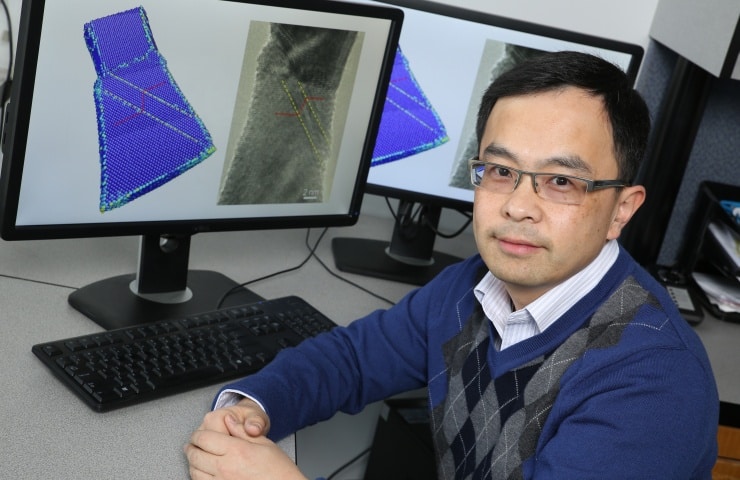A combination of electron microscopy and computer modelling has helped materials scientists discover a quirk of behaviour in nanoscale samples of tungsten that could help discover ways to improve material strength without sacrificing its ability to be processed into different shapes. Key to the discovery was a new technique to make samples of nanowires small enough to be studied by high-resolution transmission electron microscopy.

The researchers, from Georgia Tech in Atlanta, the University of Pittsburgh and Drexel University in Philadelphia, first had to devise a way to make tungsten samples below 100nm in size. Graduate student Jiang Wang and research leader Scott Mao, both of Pittsburgh’s Swanson School of Engineering, welded together two small pieces of individual tungsten crystals to create a 20nm nanowire, which allowed the arrangement of atoms in the crystal, a form known as a body-centred cube (BCC), to be resolved by the microscopes. BCC structures are based on a unit of eight atoms at the vertices of a cube surrounding a single atom in the middle.
The team explained in Nature Materials that when the nanotungsten deforms, it undergoes a process called deformation twinning. This involves the crystal reorienting itself under loading in such a way that a region in the crystal is formed which is an exact mirror image on the original crystal. This allows the structure to deform permanently without breaking and, although it has been observed in bulk material and alloys, it’s never been seen before at the atomic level in nanocrystals.
The team used computer models that show physical factors at play during twinning were used to understand the TEM observations and predict how it might occur in other BCC metals. Oddly, bulk tungsten doesn’t have this twinning ability, and tungsten appears to be stronger at smaller scale than in larger samples.
”If you reduce the size to nanometre scale, you can increase strength by several orders of magnitude, but the price you pay is a dramatic decrease in ductility,” said Georgia Tech’s Ting Zhu in a statement. ”We want to increase the strength without compromising the ductility in developing these nanostructured metals and alloys. To reach this objective, we need to understand the controlling deformation mechanisms.”
According to Zhu, it might be possible to engineer twinned crystal structures in nanoscale BCC samples to enhance ductility.




Nanogenerator consumes CO2 to generate electricity
Whoopee, they've solved how to keep a light on but not a lot else.